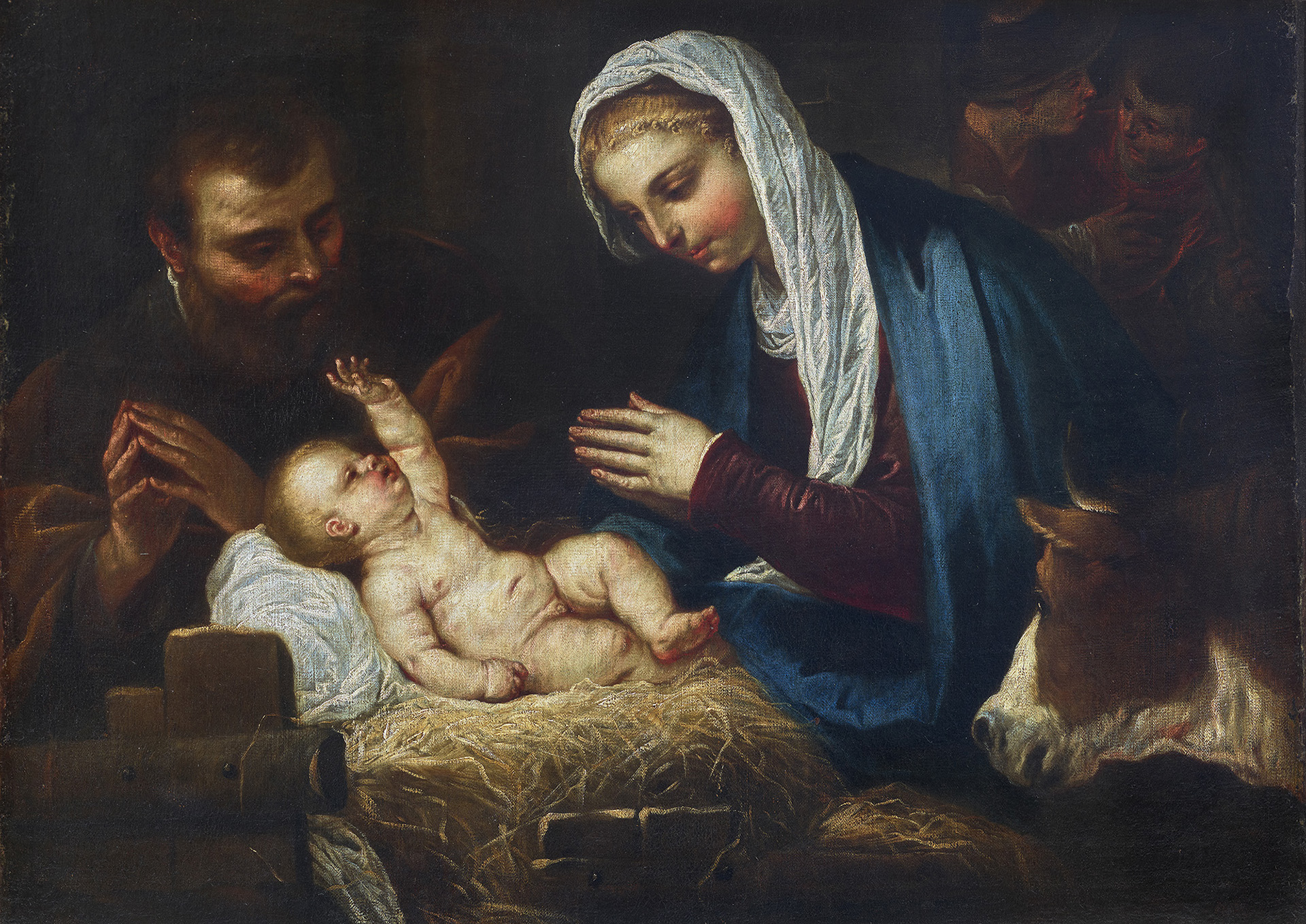The sure attribution to Tintoretto by the Marquis of Lozoya in the 1951 catalogue of paintings of the Duke of Lerma Foundation, with these words, "[...]. entirely by the hand of the great Venetian master, although it is not signed"has been erroneously considered to be the traditional one for this painting. In fact, since the first inventory of the Santisteban collection, all subsequent inventories have referred to it as "...".Nativity in imitation of Titian"The second one, which Antonio Palomino made in 1716, is already correctly attributed to Luca Giordano and the "catalogue" of 1877 continues to do so.
Andreina Griseri (1961) corrected the attribution of the Marquis of Lozoya, considering it a work of Giordano's maturity, a period in which his style resembled the pictorial freedom of Tintoretto and he acquired the looseness of the Venetian brushstroke, linking it to the Flight into Egypt in the Royal Palace at Aranjuez, which Ferrari-Scavizzi cautiously date to the 1670s [A293] and to La Fucina de Vulcano in the Mahon collection in London, dated by the same authors, with greater certainty, to around 1660 [A90].
The artist makes masterly use of light, colour and detail in order to set the figures in a hierarchy and distinguish the various planes. The infant Jesus receives all the light and radiates it on the Virgin's face, in which the subtlety of the brushstrokes in the cloth around his head and the vibrant blue of his cloak stand out, while Saint Joseph is in the background, more faded and with more brownish colours, and a third plane is created in the upper right corner, with a conversation between two shepherds, their faces barely outlined and with a predominance of brown and grey.


